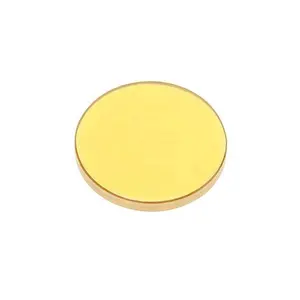
Optical Manufacturers Optics Manufacturer Customize Infrared ZnSe Windows Laser Optical Glass Lens Germanium Silicon Sapphire Window


Customized Contact Lenses Packaging Premium 3 Tone Contact Lenses Box Luxury Hidrocor Eye Lenses Color Contact Lens

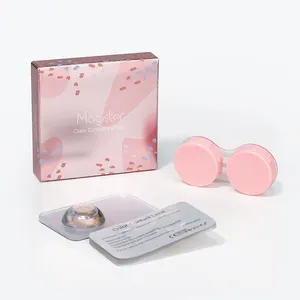





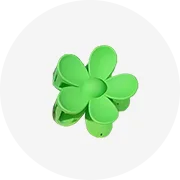
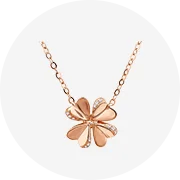
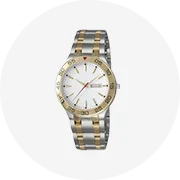
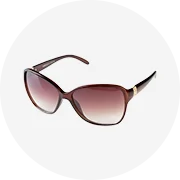
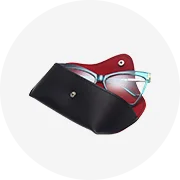
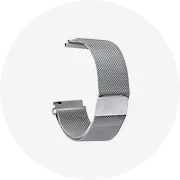
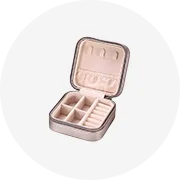
In the intricate dance of the reseller market, the quest for quality contact lenses is more than a mere transaction—it's a commitment to eye health and customer satisfaction. For resellers, the challenge lies not only in offering a product but in providing a medical device that stands up to rigorous standards and diverse consumer needs. This article delves into the critical importance of quality in contact lenses, the various types available, and the specialized options for different vision problems. We will explore the essential features to consider when sourcing these lenses and how platforms like Alibaba.com can be instrumental in gaining a competitive edge. Join us as we navigate the complexities of the contact lens market and uncover strategies for resellers to thrive.

Ensuring the quality of contact lenses is paramount, given their classification as medical devices. The materials used in their production must meet stringent regulatory standards, such as those set by the FDA, to ensure safety and compatibility with the human eye. Rigorous inspection protocols are in place to maintain this quality. These include verifying the uniformity of lens colors to approved samples or the Pantone color chart, precise measurement of lens dimensions like diameter and thickness, and ensuring the correct refractive power for vision correction. The edge quality is also scrutinized for any imperfections that could cause discomfort or harm.
Performance testing forms a critical part of the quality assurance process. Contact lenses must offer adequate UV protection, as per various international standards, and demonstrate high wettability to maintain the natural tear flow of the eye. The specific gravity of the lenses is checked to match that of human tears to prevent movement and potential irritation. Additionally, the semi-permeability of lenses is tested to ensure sufficient oxygen reaches the cornea, which is vital for eye health. Pre-packaging and packaging inspections are conducted to ensure the sterility and safety of the product, right up to the point of use.

Contact lenses are categorized primarily by their wear schedule and material composition. There are lenses designed for overnight wear, which can be either soft or rigid gas permeable (RGP). Soft lenses are often used for extended periods, ranging from one to six days, and then discarded. Additionally, there are soft daily-wear lenses that are replaced on a planned schedule, which can be bi-weekly, monthly, or quarterly.
The market also offers lenses for specific durations, with some designed to be worn for up to 30 days. It's crucial for users to follow the prescribed wear schedule to maintain eye health and lens performance. The variety of replacement schedules reflects the diverse needs and preferences of contact lens wearers, catering to different lifestyles and comfort requirements.
The development of contact lenses has also seen innovations like prototype lenses for sustained drug release. These are being researched for their potential to deliver medication to the eye more effectively than traditional eye drops, which could improve treatment for conditions like glaucoma. However, this technology faces challenges such as cost, processing, storage, and controlling the drug delivery rate.
Daily wear contact lenses are designed for use during the day and should be removed before sleep. Their primary advantage lies in the minimal maintenance required; there's no need for extensive cleaning or storage solutions, as they are disposed of after a single use. However, they are not intended for overnight wear and are not approved by regulatory bodies for such use.
In contrast, extended wear contact lenses are crafted to be worn for longer durations, with some varieties approved for 1-2 weeks and others up to a month. These lenses are typically replaced on a bi-weekly basis in the United States, following the specific wear schedule recommended by the optometrist and brand guidelines.
A key difference between the two types is the material composition. Extended wear lenses are designed to permit greater oxygen flow to the eye's surface, which is crucial for eye health during prolonged wear. It's essential to adhere to the prescribed schedule to mitigate risks associated with extended use.
While some extended wear lenses are approved for overnight use, it's not a universal feature. Patients interested in sleeping with their lenses should consult their eye care professional to ensure they receive a prescription suitable for their needs.
Toric contact lenses represent a specialized solution for individuals with astigmatism, a common vision irregularity where the eye's curvature causes blurred vision. Unlike standard lenses, toric lenses possess distinct corrective powers and orientations to address the unique refractive errors caused by astigmatism. They must maintain a specific position on the eye to ensure clear vision, often achieved through a weighted design. These lenses cater to those who also have nearsightedness or farsightedness, providing a multifaceted approach to vision correction. The availability of toric lenses in various modalities, such as disposable, multifocal, and even color-changing options, expands the choices for consumers seeking both correction and comfort.

When sourcing contact lenses, it's crucial to consider features that ensure user comfort and eye health. Key parameters include the lens material, oxygen permeability (Dk/t), and moisture content. Soft lenses, often made from hydrogel or silicone-hydrogel, are favored for their elasticity and comfort. The moisture content in these lenses can vary, with higher levels typically providing more corneal hydration, reducing dryness and discomfort. Oxygen permeability is another vital feature, as it helps prevent corneal hypoxia, ensuring the cornea receives sufficient oxygen.
The replacement schedule and wearing mode are also important. Daily disposable lenses are advantageous for those with sensitivities or allergies, as they reduce the potential for deposit accumulation. For cost-effectiveness, monthly lenses strike a balance between convenience and price. Additionally, the wearing mode should align with the user's lifestyle; some lenses are designed for daytime use only, while others can be worn overnight or continuously for extended periods, under professional guidance.
For vision correction, spherical, aspherical, toric, and multifocal lenses cater to different refractive errors. Toric lenses are tailored for astigmatism, featuring different optical powers to correct the uneven curvature of the eye. Multifocal lenses address presbyopia, allowing clear vision at varying distances. Each type of lens comes with specific design features to meet individual vision needs, emphasizing the importance of professional fitting.
Soft contact lenses, available as hydrogel or silicone hydrogel, offer different benefits due to their unique materials. Hydrogel lenses, known for their high water content, allow oxygen to pass through, which is essential for maintaining eye health. They are particularly suitable for individuals with dry or sensitive eyes. However, they may lose moisture over time and are prone to protein deposits, which can lead to discomfort.
Silicone hydrogel lenses represent an evolution in lens technology, providing increased oxygen permeability compared to traditional hydrogel lenses. This feature is crucial for preventing conditions like Hypoxia, which can cause dryness and discomfort. While silicone hydrogels are slightly firmer, making them easier to handle, they can attract lipid deposits. Manufacturers have addressed this by adding wetting agents to the lenses, helping them to stay moist longer.
Advancements in lens technology have allowed for efficient oxygen transport with less silicone, making room for more hydrophilic components in the lenses. This balance aims to offer the hydration benefits of hydrogel while maintaining the superior oxygen permeability of silicone hydrogel lenses.
Sourcing contact lenses from Alibaba.com presents a range of advantages for resellers looking to enhance their product offerings. The platform's extensive selection includes a variety of contact lenses to cater to different preferences, such as soft natural eye colored contacts, cosmetic lenses, and specialized options like lenses for Halloween and cosplay. Alibaba.com's global reach connects resellers with suppliers offering diverse materials and features, including silicone hydrogel lenses known for their breathability and comfort. The availability of custom packaging solutions on the platform allows for a personalized touch, which can be a significant selling point. Moreover, the convenience of ready-to-ship products ensures that resellers can quickly replenish their inventory to meet customer demand. By leveraging Alibaba.com, resellers can access a broad spectrum of contact lenses, from daily wear to extended wear, and from transparent to vibrant colored options, all under one digital roof.
Alibaba.com presents a diverse array of contact lenses to cater to various visual requirements and preferences. These lenses are designed to accommodate different usage frequencies and disposal routines, ensuring that there is a suitable option for every user. The selection includes lenses made from a variety of materials, such as soft lenses for comfort, silicone hydrogel for increased oxygen permeability, and rigid lenses for correcting complex vision issues.
When exploring the vast inventory on Alibaba.com, resellers can find lenses for daily wear, which require nightly removal, as well as extended wear contacts that can be worn continuously for longer periods. The platform also offers specialized lenses tailored for specific vision problems, providing a comprehensive solution for those with unique optical needs.
The contact lenses available on Alibaba.com are sourced from reputable brands, emphasizing the importance of safety and quality in eye care. Resellers looking to source these products can navigate through the options using filters for material, type, and usage frequency to find the perfect match for their market demands. This selection process is streamlined to aid resellers in building a competitive edge by offering a variety of contact lenses that meet the expectations and requirements of end-users.
Competing in the contact lens market requires strategic moves to stand out. Optometrists can leverage several tactics to maintain a strong sales presence. Fitting patients with GP (Gas Permeable) lenses offers a personalized approach that caters to specific vision needs, setting a provider apart from competitors. Custom soft contact lenses are another avenue, providing unique solutions for patients and a point of differentiation in the market.
Private label soft lenses present an opportunity for businesses to brand their own products, which can foster customer loyalty and enhance market presence. Orthokeratology, a non-surgical method to correct vision while sleeping, is an innovative service that can attract a niche market looking for alternatives to traditional lenses or surgery.
Helping patients save on costs without compromising on quality can also be a significant competitive advantage. This can be achieved by offering various pricing options that cater to different budgets. Additionally, joining an online marketplace broadens the reach to potential customers, providing a platform to showcase a diverse range of products.
The key to winning the battle for contact lens sales lies in the willingness to adapt and offer specialized services and products that meet the evolving needs of consumers. By focusing on these strategies, optometrists and resellers can create a competitive edge in a crowded marketplace.
In conclusion, the journey to sourcing top-quality contact lenses is multifaceted, requiring a keen eye for detail and a deep understanding of consumer needs. From ensuring adherence to stringent quality standards to selecting the right type of lens—be it daily wear, extended wear, or specialized toric lenses—the reseller's role is pivotal in safeguarding eye health. Material considerations, such as the advent of silicone hydrogel, and the strategic advantages of platforms like Alibaba.com, provide resellers with the tools to cater to a diverse clientele. By embracing innovative products and services, such as private labeling and orthokeratology, and by leveraging online marketplaces for greater reach, resellers can establish a formidable presence in the competitive landscape. Ultimately, success hinges on the ability to adapt and offer tailored solutions that resonate with the evolving demands of contact lens wearers, ensuring clarity of vision and a competitive edge in the market.